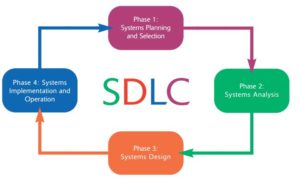- October 18, 2022
- Posted by: Andrej Stojanovski
- Category: IGA News

WHAT ARE THE SYSTEM ANALYST ROLES?
As organizations and technology have become more complex, most large organizations now build project teams that incorporate several analysts with different, but complementary, roles.
In smaller organizations, one person may play several of these roles. Now we will briefly describe these roles and how they contribute to a systems development project.
The system analyst role focuses on the IS issues surrounding the system.
This person develops ideas and suggestions for ways that IT can support and improve business processes, helps design new business processes supported by the IT, designs the new information system, and ensures that all IS standards are maintained. The system analyst will have significant training and experience in analysis and design and in programming.
The business analyst role focuses on the business issues surrounding the system. This person helps to identify the business issues surrounding the system. This person helps to identify the business value that the system will create, develops ideas, for improving the business process, and helps design new business processes and policies. The business analyst will have business training and experience, plus knowledge of analysis and design.
The requirements analyst role focuses on eliciting the requirements from the stakeholders associated with the new system. As more organizations recognize the critical role that complete and accurate requirements play in the system’s ultimate success, this specialty has gradually evolved. Requirements analysts understand the business well, are excellent communicators and are highly skilled in an array of requirements elicitation techniques.
The infrastructure analyst role focuses on technical issues surrounding the ways the system will interact with the organization’s technical infrastructure (hardware, software, network, and databases). This person ensures that the new information system conforms to organizational standards and helps to identify infrastructure changes that will be needed to support the system. The infrastructure analyst will have significant training and experience in networking, databse, administration, and various hardware and software products. Over time, an experienced infrastructure analyst may assume the role of a software architect, who takes a holistic view of the organization’s entire IT environment and guides application design decisions within that context.
The change management analyst role focuses on the people and management issues surrounding the system installation. This person ensures that adequate documentation and support are available to users, provides user training on the new system, and develops strategies to overcome resistance to change. The change management analyst will have significant training and experience in organizational behavior and specific expertise in change management.
The project manager role ensures that the project is completed on time and within budget and that the system delivers the expected value to the organization. The project manager is often a seasoned system analyst who, through training and experience, has acquired specialized project management knowledge and skills.
The roles and the names used to describe them may vary from organization to organization. In addition, there is no single typical career path through these professional roles. Some people may enter the field as a more technically-oriented programmers/analyst. Other may enter as a business-oriented functional specialists with an interest in applying IT to solve business problems.

THE SYSTEM DEVELOPMENT LIFE CYCLE
In many ways, building an information system is similar to building a house. First, the owner describes the vision for the house to the developer. Second, this idea is transformed into sketches and drawings that are shown to the owner and refined until the owner agrees that the pictures depict what he or she wants. Third, a set of detailed blueprints is developed that presents much more specific information about the house (e.g., the layout of rooms, placement of plumbing fixtures and electrical outlets, and so on). Finally, the house is built following the blueprints and often with some changes and decisions made by the owner as the house is erected.
Building an information system using the SDLC follows a similar set of four fundamental phases: planning, analysis, design, and implementation.
Each phase is composed of a series of steps, which rely on techniques that produce deliverables.
Different projects may emphasize different parts of the SDLC or approach the SDLC phases in different ways, but all projects have elements of these four phases.
For now, there are two important points to understand about SDLC.
First, you should get a general sense of the phases and steps that IS projects move through and some of the techniques that produce certain deliverables. In this section, we provide an overview of the phases, steps, and some of the techniques that are used to accomplish the steps.
Second, it is important to understand that the SDLC is a process of gradual refinement. The deliverables in the analysis phase provide a general idea of what the new system will do. These deliverables are used as input to the design phase, which then refines them to produce a set of deliverables that describes in much more detailed terms exactly how the system should be built.
These deliverables in turn are used in the implementation phase to guide the creation of the actual system. Each phase refines and elaborates on the work done previously.
Stay with us for more detailed SDLC phases 🙂
